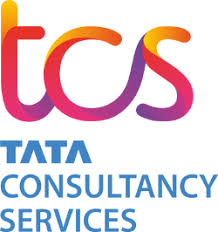Enhancing customer service efficiency
%201%20(1).png)
Rakuten uses OpenAI’s models to leverage its vast data assets for improving customer service, extracting value from unstructured data, and enhancing B2B consulting. By implementing RAG (retrieval-augmented generation), they drastically improve response times for customer service, develop shopping review summarization features, and empower merchants with actionable insights.
.png)
Drastically improves response times for customer service.
42
AI use cases in
Retail & e-commerce

%201%20(1).png)
Urban Company leveraged generative AI to revolutionize its home services by automating customer support and quality assurance processes. They implemented AI-powered empathetic chatbots, automated photo-based quality checks, and smart decisioning flows using Azure OpenAI services to streamline scheduling and support a distributed workforce. This integration improved operational workflows and enhanced customer interactions across its service platform.
%20(1).png)

%201%20(1).png)
Nykaa partnered with Microsoft by integrating GitHub Copilot into their coding workflows to automate repetitive tasks such as code completion and unit test case generation. The solution was implemented by embedding Copilot Chat into their development environment to assist with documentation, code refactoring, and quality assurance, thereby streamlining the entire coding process.
%20(1).png)

%201%20(1).png)
Wayfair, a U.S. ecommerce retailer, uses ChatGPT and OpenAI APIs across the organization, including legal, research, marketing, and customer service. They leverage AI to enhance personalization, enrich product data, optimize supply chains, and modernize legacy systems, improving both customer experience and operational efficiency.
%20(1).png)
151
companies using
Data Agents

%201%20(1).png)
wealthAPI implemented a next‐gen contract detection solution by integrating DataStax Astra DB on Google Cloud and leveraging Google Gemini models for AI‐powered analysis. They deployed DataStax’s vector search and real‐time insights capabilities to scale contract detection across millions of users in less than three months, streamlining wealth management workflows by dramatically reducing response times and efficiently handling massive data volumes.
%20(1).png)

%201%20(1).png)
Aura Intelligence integrated Anthropic's Claude via Amazon Bedrock into its data pipeline to automatically classify over 200 million job titles and industry pairings from multi-language data, replacing manual lookups and fuzzy matching. They fine-tuned foundation models on proprietary datasets and leveraged AWS infrastructure, including SageMaker and prompt management, to automate QA, report generation, anomaly detection, and real-time hiring trend analysis.
%20(1).png)

%201%20(1).png)
LaunchNotes leverages Claude in Amazon Bedrock in their product 'Graph' to transform engineering data into actionable insights. Graph functions as an ETL platform with Claude managing data pipelines, helping engineering managers understand development metrics, reduce incident identification time, automate updates, and generate customized release notes and technical documentation.
%20(1).png)
78
solutions powered by
OpenAI

%201%20(1).png)
Notion reimagined its platform by deeply integrating OpenAI’s GPT‑4o, GPT‑4o mini, and embeddings across its core features. They prototyped an AI writing assistant during a hackathon and then built internal tools to rapidly evaluate and deploy new models, transforming workflows in search, note-taking, and knowledge management from static content to interactive, actionable insights.
%20(1).png)

%201%20(1).png)
Zendesk integrated OpenAI's models to create adaptive AI service agents that autonomously manage customer conversations and execute resolution tasks. They implemented a multi-agent architecture featuring task identification, conversational RAG, procedure compilation, and procedure execution agents integrated with existing support workflows through API calls and natural language procedure definitions, while providing real-time chain-of-thought visibility. This solution transitions from traditional intent-based bots to a hybrid model of scripted and generative reasoning, streamlining customer service processes.
%20(1).png)

%201%20(1).png)
Hebbia built Matrix, a multi-agent AI platform that orchestrates OpenAI models including o3‑mini, o1, and GPT‑4o to automate complex financial and legal research tasks. The platform decomposes intricate queries into structured analytical steps and integrates modules like OCR, hallucination validation, and artifact generation to process complete documents, creating an infinite effective context window. This solution streamlines due diligence, contract review, and market research workflows, drastically reducing manual processing time.
%20(1).png)
78
AI use cases in
Asia

%201%20(1).png)
TCS partnered with Google Cloud to integrate advanced AI and generative AI capabilities into retail service offerings. They launched the Google Cloud Gemini Experience Center at their Retail Innovation Lab in Chennai, enabling retail clients to ideate, prototype, and co-develop tailored AI solutions that optimize supply chain, warehouse receiving, customer insights, and content creation. This approach automated processes using tools like Vertex AI Vision for warehouse receiving and leveraged Vertex AI with Gemini 1.5 Pro and speech-to-text to transform service centers.
%20(1).png)

%201%20(1).png)
LY Corporation leveraged OpenAI’s API to integrate advanced generative AI into its flagship services, including a GPT‑4o-powered LINE AI Assistant and GPT‑4 enhancements in Yahoo! JAPAN Search for summarizing reviews and generating travel plans. They also deployed SeekAI, an in-house productivity tool using RAG to rapidly retrieve information from internal documentation, streamlining employee inquiries and operations.
%20(1).png)

%201%20(1).png)
Physics Wallah developed 'Gyan Guru', a hyperpersonalized conversational study companion to address the unique academic and support needs of its 2 million daily users. The system was implemented by indexing over one million Q&As and ten million solved doubts in a vector database, then leveraging a Retrieval-Augmented Generation (RAG) approach integrated with Azure OpenAI to deliver individualized, context-aware responses. This integration streamlined various student interactions including academic queries, product-related issues, and general support, reducing reliance on human subject matter experts.
%20(1).png)
%201%20(1).png)
%202.png)

%202.png)
%201.png)
%201.png)
%20(1)%20(1).png)
.png)


.png)
.svg)


.png)


.png)









%201.png)